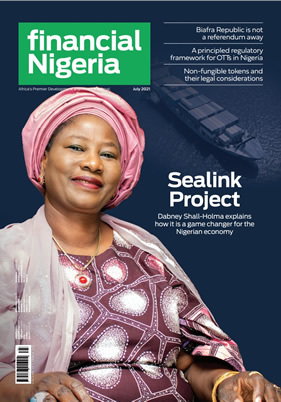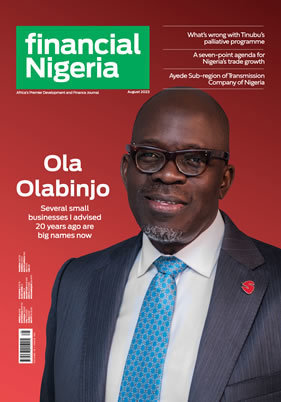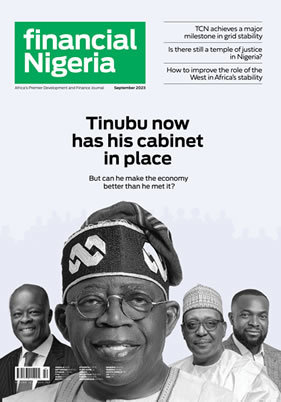
Akachi Ngwu, Author, Entrepreneur
Subjects of Interest
- Communications
- Entreprenuership
- Public Relations
Harnessing media fragmentation opportunities in out-of-home advertising 16 Aug 2017
Media fragmentation continues to be a mixed blessing for advertisers. On the one hand, it enhances the effectiveness of marketing communication and provides opportunities to reach the more sophisticated and technology-savvy consumers. On the other hand, the competition between old and new media has made it increasingly more difficult to reach target audiences. With the advent of the internet and social media, audiences are divided across different channels, even as media consumption habits continue to evolve.
Media fragmentation is more pervasive across television, radio, and the print media. In addition to traditional TV channels, radio stations, newspapers and magazine; video and TV streaming services, podcasts, blogs, etc have been thrown into the media mix. With this changing media and digital consumption habits, it has become imperative for advertisers to understand their audiences, and also get a grasp of the different devices and platforms used by consumers. This would help to design and plan marketing communication strategies.
The only traditional advertising medium unaffected by fragmentation is out-of-home (OOH) or outdoor advertising. This is due to the uniqueness of its structural dependencies and the fact that 70 per cent of the consumer's day is spent outside of the home.
Furthermore, while consumers are outdoor and commuting, mobile use is going on. Therefore, advertisers are combining OOH with mobile technology as part of Integrated Marketing Communication (IMC). With the application of IMC, companies deploy their brand messaging across both traditional and non-traditional marketing channels, with each channel reinforcing the other. One of the advantages of IMC is that brand messaging is more consistent. This helps in driving customer loyalty and boosting sales and profits.
However, investment in this marketing communication strategy would have to be justified by the proper analytics of media audiences, to enable strategic OOH buying and return on investment (ROI). This is why audience measurement is a major aspect of the OOH advertising industry. Where information about the target audience is not properly understood or analysed, it has often resulted in inappropriate rate determination and poor buying decisions.
Research has found that consumers are more likely to click on a mobile ad after first being exposed to it on an OOH platform. This means OOH drives considerable online activity. A recent survey conducted by Nielsen – a global player in the field of audience measurement – provides evidence that OOH is the most effective offline medium for driving online activity. According to the survey, OOH delivers four times the online activations across Facebook, Twitter and Instagram, per dollar spent, than any other offline advertising. Rosanne Caron, President of Out-of-Home Marketing Association of Canada (OMAC), said "OOH serves as a trigger for online search with consumers on the go.”
Similarly, a report on the U.S. advertising market conducted by Omnicom Media Group's Benchmarketing, found that when OOH is incorporated into the media mix, it increases the overall campaign ROI by 37 per cent. Responding to the Benchmarketing report, Chief Marketing Officer of the Outdoor Advertising Association of America (OAAA), Stephen Freitas, said, “Using OOH in any campaign makes it more effective. This new report tells us advertisers see their sales grow and brand awareness increase when OOH is used in the media mix.”
Demonstrating the media ecosystem approach, the Nigeria unit of Posterscope, the world's leading out-of-home communications agency, pulled off an OOH campaign at the Admiralty Toll Plaza located along the busy Lekki-Epe arterial road in Lagos for Diageo's Johnnie Walker. The campaign combined digital outdoor advertising with experiential marketing, and social media in a form of integrated marketing communication. Over a period of four days in June, during the month-long commemoration of Lagos@50 – the 50th anniversary of Lagos State – the OOH agency said it negotiated a deal to hold the OOH campaign at the toll plaza. It involved beaming Johnnie Walker messages from the digital billboard screens, while the company's brand ambassadors gave out Johnnie Walker-motivational quotes to commuters.
In the period of the campaign, vehicles were allowed to drive through the toll booths without paying the usual tolls. Videos and photos of activation were posted on social media – and reported by some traditional media organisations – to achieve content amplification.
Despite the challenge with media fragmentation and the diminished marketing communication budgets due to the current economic recession in Nigeria, a strategic outdoor advertising strategy can be a tool to deliver exceptional value to advertisers and improve the utilization of OOH inventories. Posterscope said the drinks company had tasked media agencies to help reignite its brand equity. Going by the above report on the U.S. market by Benchmarketing, that integrating OOH in a campaign improves the return on investment for the campaign, the Posterscope campaign is expected to improve sales for Johnnie Walker.
OOH facilitates the amplification and reinforcement of campaign messages as consumers commute daily. That is why this form of advertising has remained insulated from media fragmentation, thereby, helping to improve brand awareness and deliver value to advertisers. Underpinning its utilization and effectiveness is the social media and online activations it generates for brands as research has proved.
The combination of social media and mobile technology is what spawned the SoLoMo (acronym for social, local and mobile) marketing approach. The simple idea behind SoLoMo in marketing is that social media has a huge influence on the choices and decisions of consumers. These consumers often shop locally and online. And mobile devices can provide both the convenience of payment as well as the ease of finding information to help guide the consumers' decision-making.
The concept of SoLoMo requires advertisers to ensure they have websites and the sites must be mobile-friendly. Companies also need to increase the search engine optimization of their websites, collect data about the location and preferences of consumers, among other strategies for marketing to the SoLoMo consumer.
As consumer data become an indispensable aspect of marketing communication, including OOH advertising, practitioners need to invest in data management and analytics. According to the 2017 edition of Jumia Nigeria's African Mobile Trends Paper, internet penetration in Nigeria has reached 53 per cent – the highest in Africa. Mobile subscription in the country has reached 81 per cent.
Therefore, more people will go online in Nigeria; information on them and their consumption habits will also be available for data miners. Agencies and advertisers that want to remain competitive – or even gain competitive advantage – need to be able to process and draw insights from available data to properly target brand messaging across channels.
Akachi Ngwu is the Founder/CEO of Consumer Scores International Limited, a Lagos-based in–store advertising solutions provider. He is an alumnus of the Business Leadership Programme of Leap Africa. Email: akachi.ngwu@csinichead-ng.com
Latest Blogs By Akachi Ngwu
- Rising competition and sponsorship trends in Nigerian beer market
- What recent celebrity endorsements in Nigeria mean
- Sponsorships as effective brand communication tool for SMEs
- How design thinking drives brand marketing and engagement
- Utilising storytelling for effective marketing communication






